The Coolest Coffee Maker of the 19th Century Was a Tabletop Train
Only the very wealthy could afford these delicate contraptions.
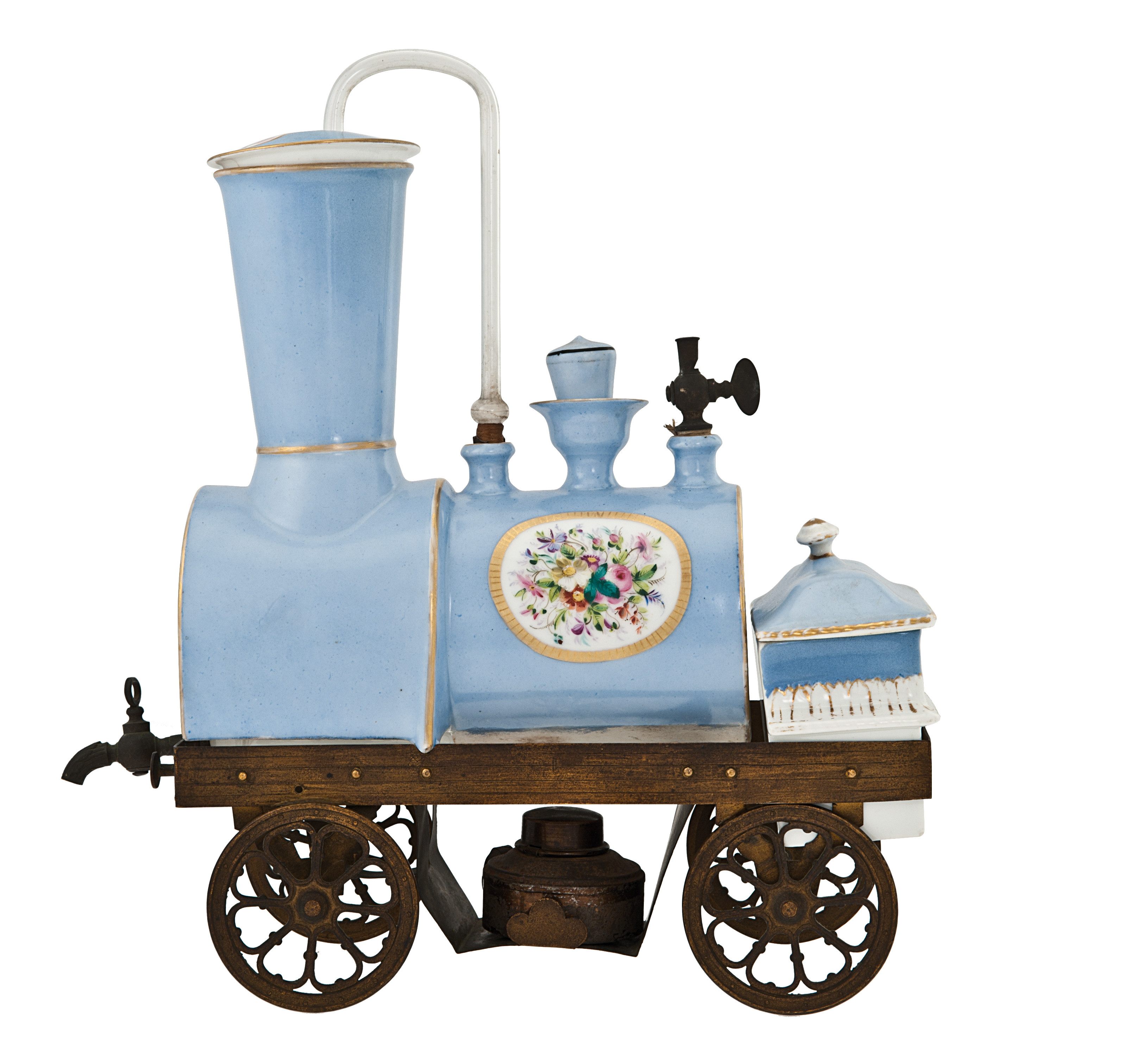
In the early-19th century, the advent of the steam locomotive hurtled the world into the future. With crude trains tearing by at speeds breathless for the time (in the tens of miles an hour), journeys of weeks turned into days, and days into hours.
But as the world sped up, people still stopped for cups of coffee. (Or needed it even more to keep pace.) And in the face of train fever, one French-Italian designer combined the bean and the train. In 1861, J.B. Toselli patented a glorious cafetière-locomotive, or “train coffee maker.”
Toselli’s cafetière-locomotive is decidedly train-shaped, with a smokestack and wheels that actually roll. But no steam engine has ever been made from baby blue or powder-puff pink ceramic, painted with flowery medallions and swooping butterflies.

The coffee world burbled with activity in the mid-19th century, from the eight-foot-tall Loysel coffee machine, which could produce 2,000 cups of coffee an hour, to an early French press, patented in 1852. But Toselli’s coffee train was special.
Enrico Maltoni, author of the tome Coffee Makers, writes that “the coffee preparation ritual, no longer banished to the kitchen, became a true moment of domestic theatre.” While he notes that train-shaped coffee makers had existed before, made from silver and brass, Toselli made them even more glamorous, with their pastel colors and elegant decoration. Toselli upgraded their inner workings too, with an advanced balance brewing system.
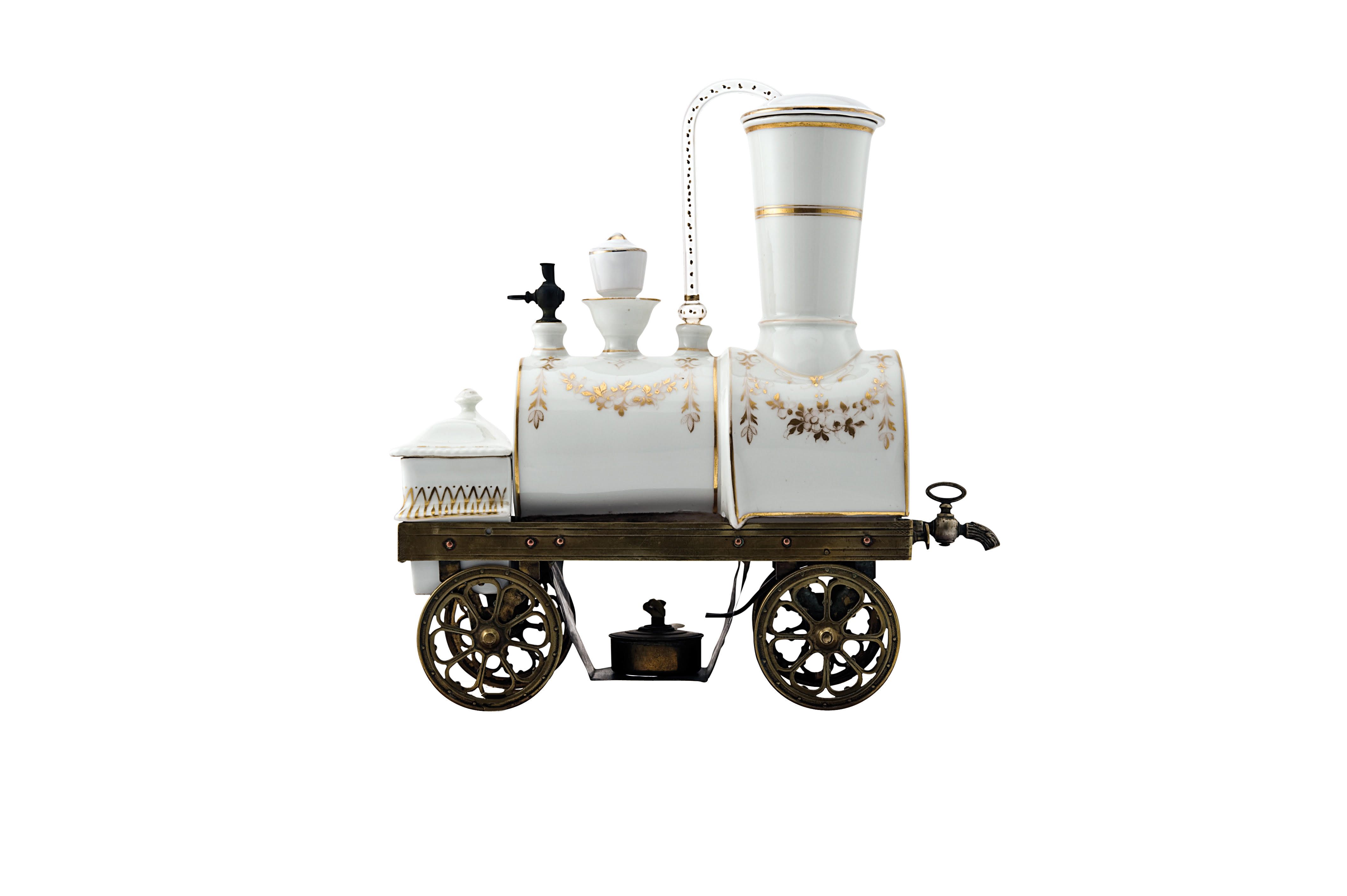
With coffee loaded into the funnel-like smokestack, water in the boiler, and the spirit flame lit beneath the chassis, steam starts whistling out of a tap at the top. But with that tap twisted shut, heated water is forced into the glass pipe connecting the boiler and smokestack. As the coffee and water mix in the front of the train, the contraption shifts forward with the weight, allowing a lid to snuff out the spirit burner. This, Maltoni writes, creates a vacuum effect as the boiler cools, and the coffee is sucked back through the tube, with the grounds left behind via a filter. Then, the coffee is ready to be poured, dispensed through a pipe running beneath the train. With puffs of steam from its safety valve and its rolling wheels, the Toselli cafetière-locomotive added “an undeniable playfulness to coffee time,” Maltoni writes.
With the addition of a safety valve, Toselli could market his coffee maker as inexplosible. Both coffee makers and trains at the time had a bad habit of exploding from steam pressure. While trains invariably claimed a higher death toll, mid-century coffee makers were no slouch in the maiming department. One coffee expert, Ian Bersten, called valve-less coffee makers of the time “table-top grenades.”
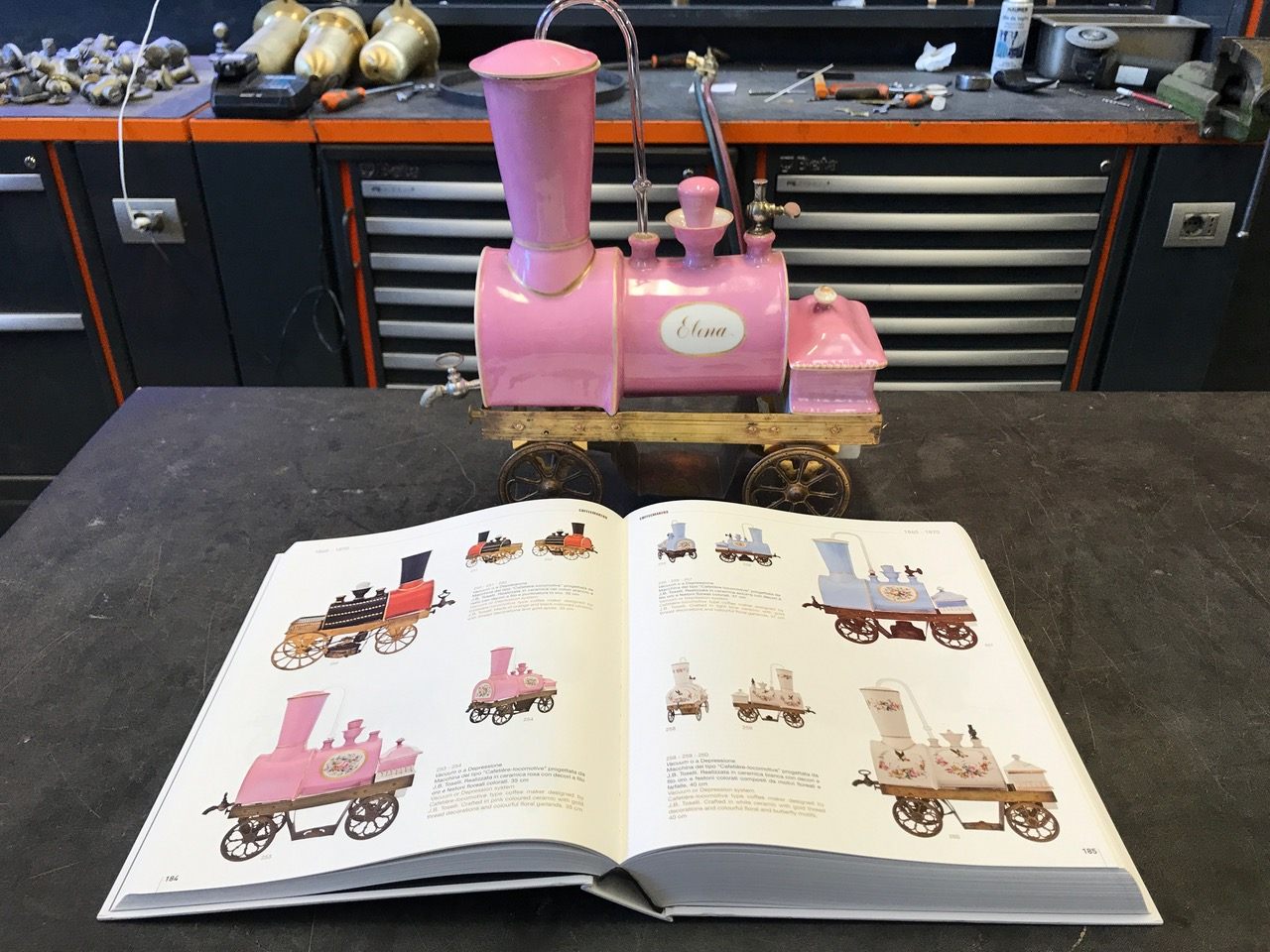
This magical coffee-making toy was never mass produced, and only the wealthiest could afford it. As a result, only a handful exist today. Maltoni, who himself is a renowned coffee-machine collector, with many of his acquisitions on display at Milan’s MUMAC, or Museum of Coffee-Making Machines, writes that for most coffee-craving collectors, they are “the object of desire.”
The era of leisurely, train-dispensed coffee was unfortunately short, and there’s very little whimsy in modern Keurigs and Mr. Coffees. But for the coffee-and-train loving individual with deep pockets, Maltoni himself has a bright pink original Toselli cafetière-locomotive for sale, for a cool €10,000.
Gastro Obscura covers the world’s most wondrous food and drink.
Sign up for our regular newsletter.





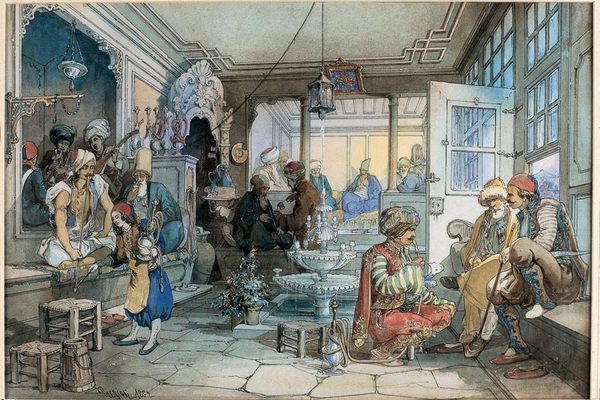

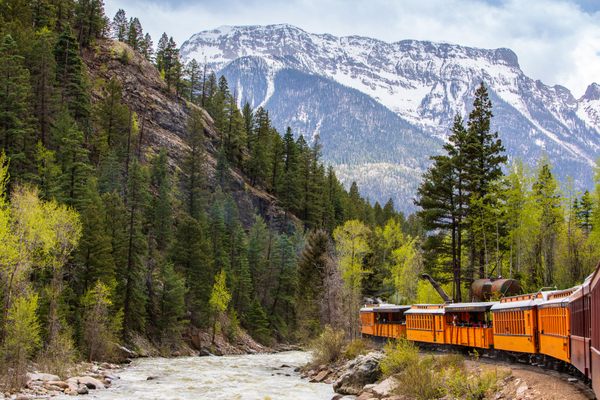




























Follow us on Twitter to get the latest on the world's hidden wonders.
Like us on Facebook to get the latest on the world's hidden wonders.
Follow us on Twitter Like us on Facebook